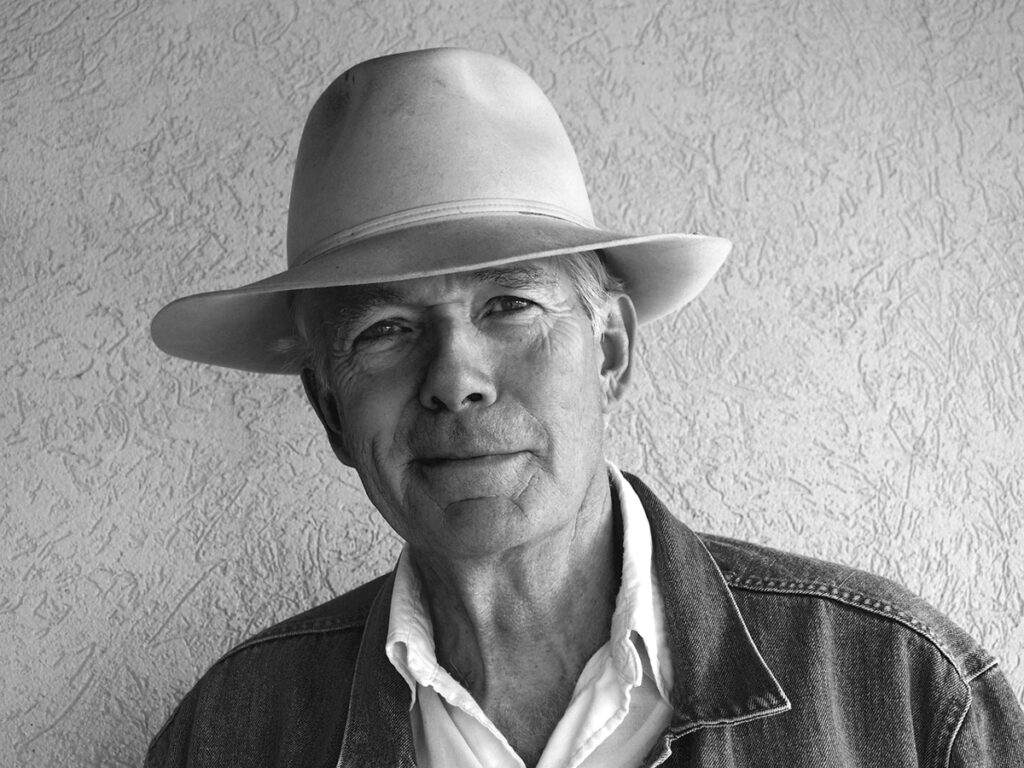
Joel Ostlind is a self-taught artist who spent much of his life herding cattle on horses throughout the American West. He holds degrees in Soil Science and Ranch Management, but this tall cowboy always carried a sketchbook to record his intimacy with the land in exquisite detail and authenticity. His sketchbook was noticed in the ’90s during a marketing photoshoot on the ranch by the artistic director of a large company who encouraged the cowboy to pursue illustration.
Ostlind’s drawings found new life as copper plate etchings depicting the full range of Western life. His style has been compared to Rembrandt’s, emphasizing expressive draftsmanship. The pencil drawings of those sketchbook days are the foundation of all of Ostlind’s artworks, just as Rembrandt used sketches to plan his canvases. Ostlind built a home studio in the Big Horn Mountains of Wyoming, featured in Western Art & Architecture, where he lives with his wife.
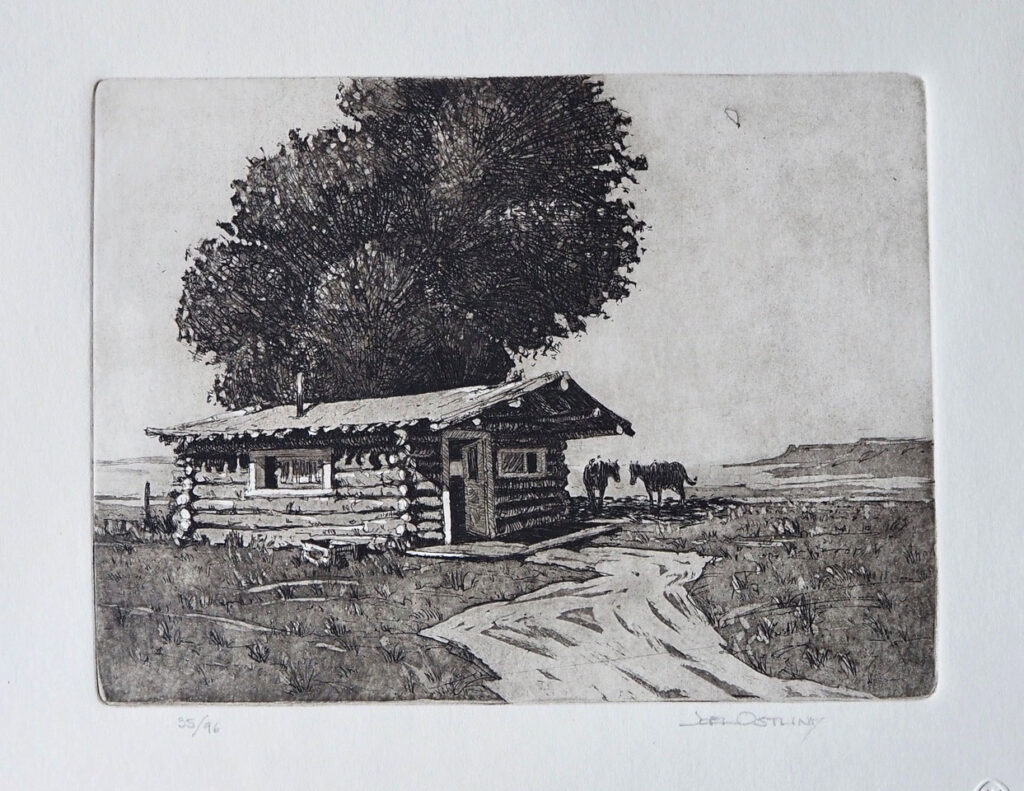
I built my studio. [My Wife] Wendy and I bought a little cabin home and pretty much paid for it with cowboy wages.
I scrounged and traded for a lot of material and built a nice studio, used it for 18 years, and then added on a straw bale addition. I traded dryland hay for lumber that had been in a train derailment. I worked for a fellow building a dance floor for a wedding– afterwards the father of the bride gave me the dance floor. The windows came out of a demolished old local home. I wanted lofted ceilings and needed support for the roof, so on a ranch we used to work on I cut down some beetle-kill pine and made two exposed trusses.
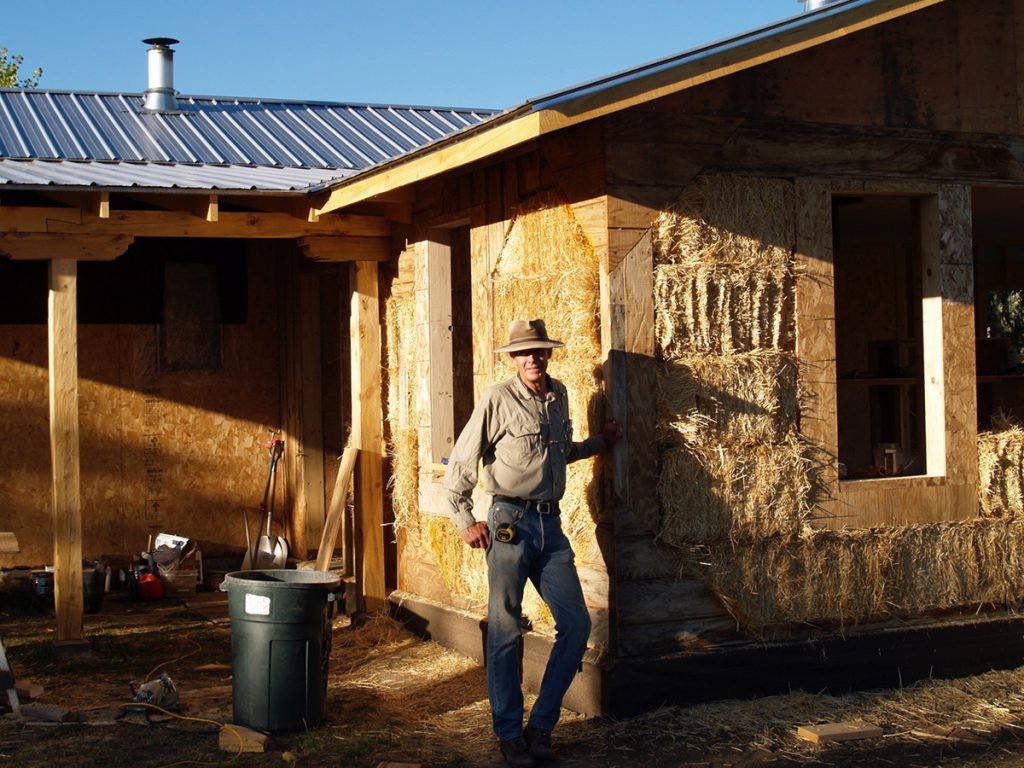
Etching has been explored by people using a lot of computer technology. I leave it out. I like the feeling of old prints, and so I don’t try to incorporate a lot of new things. What I appreciate is the essence of those old-style hand drawn traditional prints.
I don’t really like narrative art but cowboys can be very gestural with physical labor– Gestures that are really fun to watch and draw.

For me, western heritage is the world beyond the 100th meridian. It is life in the West and, having worked on several large ranches, it is also agriculture with a lot of cowboy thrown in.
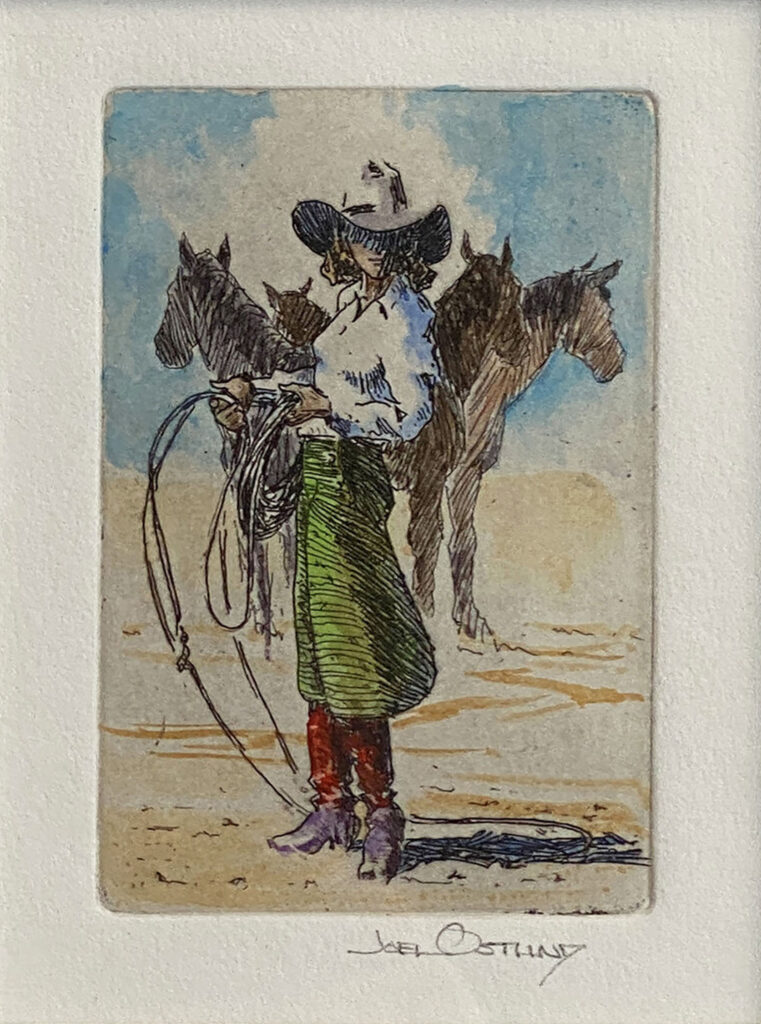
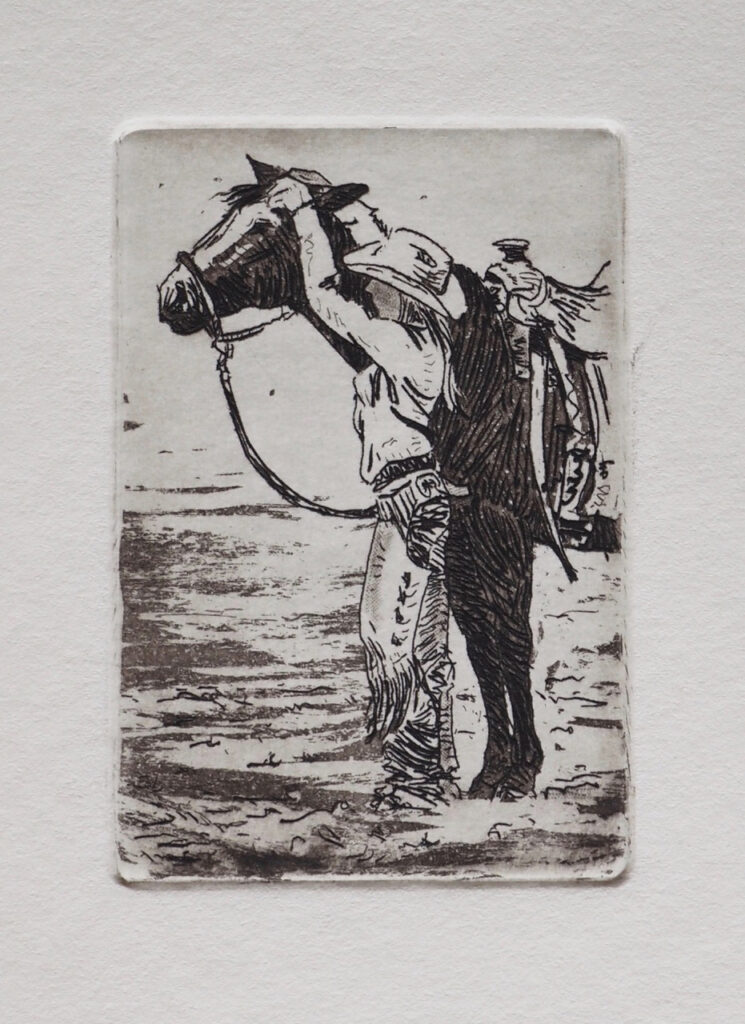
My whole life has been in the American West. The country and the life have been a lot of inspiration and nothing has been taken for granted.

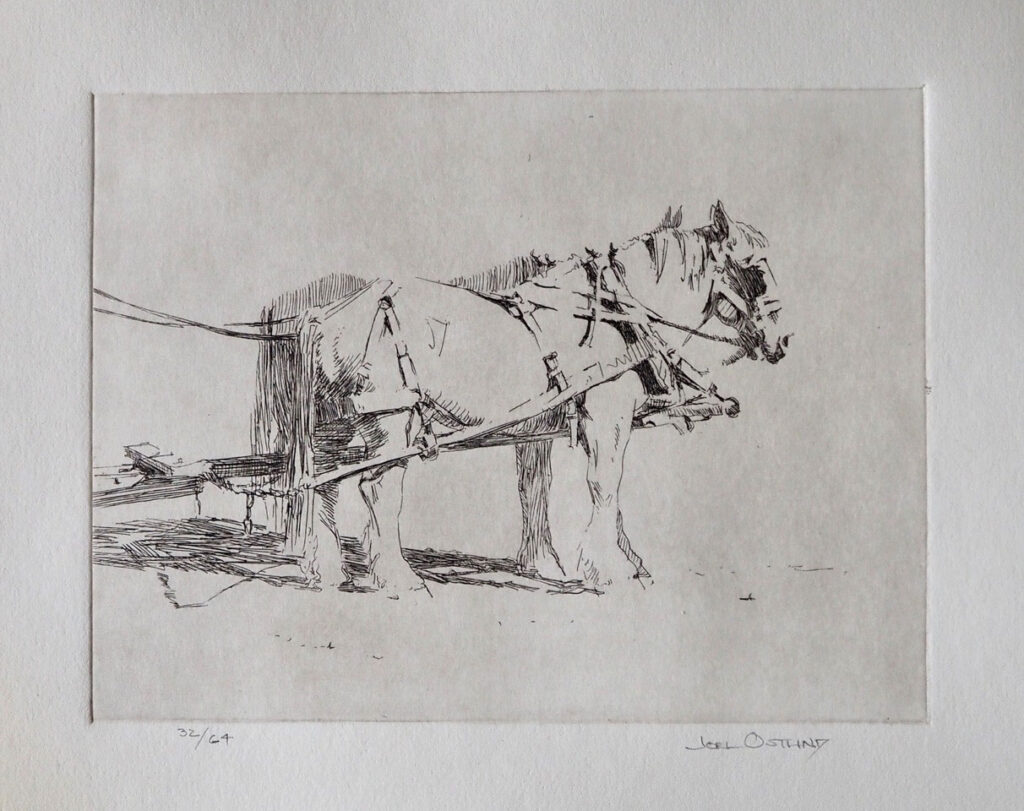
Start questioning right away. Does the idea ring some bells? Does it have some design to work with? And then: get to work.
I think better with a pen and a sketchpad than a photograph. Sometimes a piece of art looks dead. What it feels like is someone tried to do a painting of a photograph rather than a more spontaneous painting.
Be it paper, plate, or canvas, blank ground is an index to possibilities. Go back to a sketchbook and decide and resolve some things and then step out into that blank world of possibilities.
To have a piece develop in the right direction is so fine. It’s nice when I get near completion and like where I have been headed.
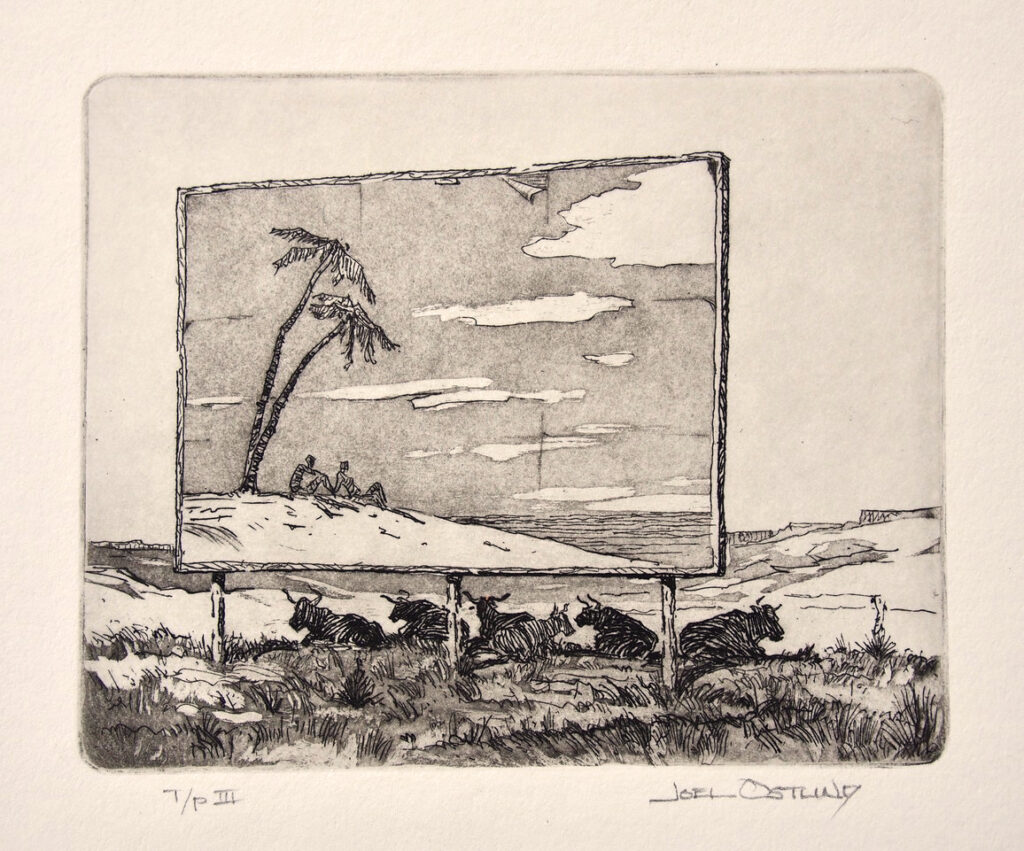
It’s critical for me as a printmaker to print my own work, and I do tweak things here and there. It’s pretty unforgivable—any scratch is a problem that won’t go away very easily.
My favorite part is once I have completed an etching plate, I will proof it. Then what I do is I’ll get a 5-power magnifying glass and look at the printed lines. You see the dimensionality of etched lines and the property of the paper. It’s always fun to get a big look at the little world. Right there I can tell how I wiped the plate that time. The quality of the lines is really cool. In terms of all of the things that can go wrong – when it works it’s great.
We are all working through our slice of life. To catch some of what I see and appreciate and to get it into two dimensions is my job. After I’ve captured some essence; be it landscape, light, or gesture, hopefully, I’ve done my part and the viewer will look at the piece and, using their own perspective, will finish the image to their liking.